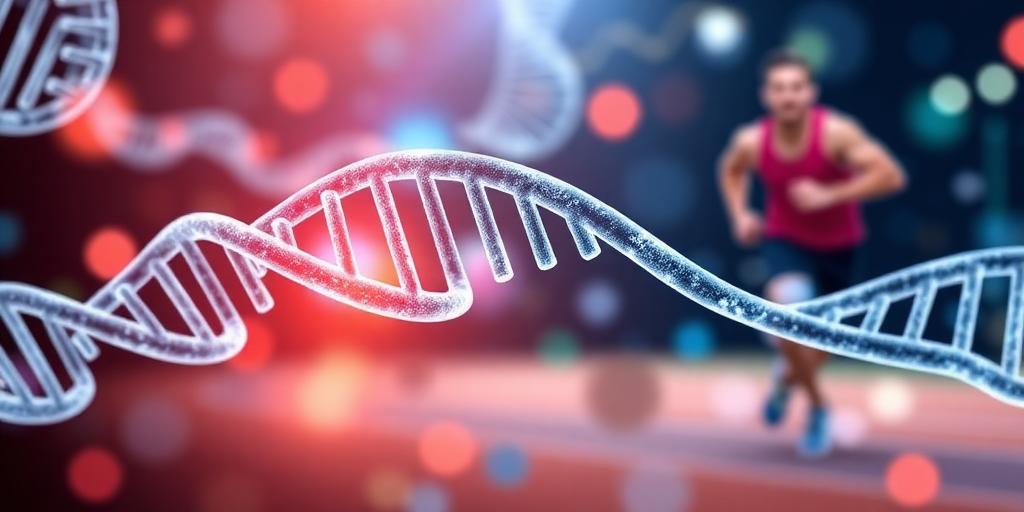The Role of Genetics in Injury Susceptibility
Understanding why some individuals are more prone to injuries than others is a complex puzzle, and genetics plays a significant role in this phenomenon. While environmental factors, training regimens, and lifestyle choices are undeniably important, our genetic makeup can predispose us to certain types of injuries. This article explores the intricate relationship between genetics and injury susceptibility, shedding light on how our genes can influence our risk.
Genetic Factors Influencing Injury Risk
Several genes have been identified as potential contributors to injury susceptibility. These genes often relate to:
- Collagen Production: Collagen is a crucial protein that provides structure and strength to connective tissues like ligaments, tendons, and cartilage. Variations in genes responsible for collagen synthesis (e.g., COL1A1) can affect the quality and resilience of these tissues.
- Inflammatory Response: The body's inflammatory response to injury is regulated by genes involved in cytokine production. Genetic variations can lead to either an overactive or underactive inflammatory response, both of which can impede healing and increase the risk of chronic issues.
- Muscle Composition: Genes influencing muscle fiber type and composition (e.g., ACTN3) can affect muscle strength and endurance. Individuals with certain genetic variants may be more susceptible to muscle strains or tears.
- Bone Density: Genes controlling bone density (e.g., VDR) can impact bone strength and the risk of stress fractures. Lower bone density, influenced by genetics, can make individuals more vulnerable to skeletal injuries.
Specific Genes and Injury Associations
Research has linked specific genes to particular types of injuries:
- ACL Injuries: Studies have suggested that variations in genes related to collagen and extracellular matrix proteins may increase the risk of anterior cruciate ligament (ACL) tears, a common knee injury among athletes.
- Tendon Injuries: Genes involved in collagen synthesis and matrix metalloproteinases (MMPs) have been associated with tendinopathies such as Achilles tendonitis.
- Muscle Cramps: Genetic variations affecting electrolyte balance and muscle contraction may predispose individuals to muscle cramps during exercise.
- Stress Fractures: Genes influencing bone density and bone remodeling can play a role in the development of stress fractures, particularly in weight-bearing bones.
The Interplay of Genetics and Environment
It's important to note that genetics doesn't act in isolation. Environmental factors, training habits, nutrition, and previous injury history all interact with our genetic predispositions. For example, an individual with a genetic variant that slightly increases their risk of ACL injury may never experience such an injury if they follow proper training techniques and maintain good physical conditioning.
Implications for Injury Prevention
Understanding the genetic factors that contribute to injury susceptibility can have significant implications for personalized injury prevention strategies. Genetic testing may help identify individuals at higher risk for certain types of injuries, allowing for tailored interventions such as:
- Customized Training Programs: Individuals with genetic predispositions to certain injuries can benefit from training programs that focus on strengthening vulnerable areas and improving biomechanics.
- Nutritional Guidance: Optimizing nutrient intake to support collagen synthesis, bone health, and muscle function may help mitigate genetic risks.
- Early Intervention: Identifying genetic risk factors can facilitate early intervention and monitoring to prevent minor issues from escalating into more serious injuries.
Conclusion
Genetics plays a significant, albeit complex, role in injury susceptibility. While we cannot change our genes, understanding our genetic predispositions can empower us to make informed decisions about training, nutrition, and injury prevention. As research continues to unravel the intricacies of the human genome, we can expect even more personalized and effective strategies for reducing injury risk and optimizing athletic performance.









